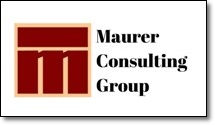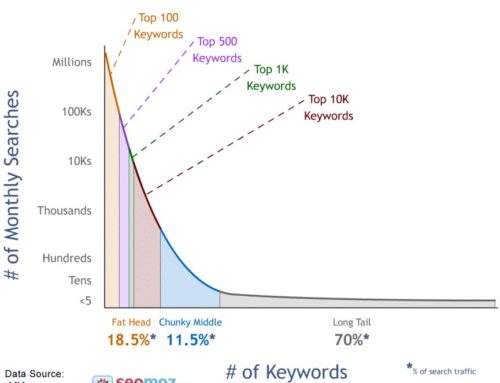As one year is behind us and another begun, small businesses find themselves hard at work in planning mode. Reviewing and analyzing successes and shortcomings of the previous year’s goals and objectives are the basis for developing new strategy and advancing existing, incomplete ones. Aim higher. Incorporate SMART strategies into your small business strategic plan for the coming year.
 Did you achieve all of last year’s strategic goals? How SMART were the strategies you put in place for the coming year? Were your desired results met? Are your strategies still valid for this year, or were there changes in the outside world that are forcing a change in your direction? The overall outlook is to move your company forward; move it to a higher level and closer to your unique vision of success. Maybe your goal was to enter 2014 with some new products or services, to add staff to help you take on more customers.
Did you achieve all of last year’s strategic goals? How SMART were the strategies you put in place for the coming year? Were your desired results met? Are your strategies still valid for this year, or were there changes in the outside world that are forcing a change in your direction? The overall outlook is to move your company forward; move it to a higher level and closer to your unique vision of success. Maybe your goal was to enter 2014 with some new products or services, to add staff to help you take on more customers.
Planning efforts need to be so much more than throwing a number of strategies into the pot each year, adding a few tactics, then allocating the necessary resources in terms of manpower, money, time and equipment. This loosey-goosey kind of planning effort isn’t likely to get you where you want to go… forward and to new heights. To have a chance to achieve the company of your dreams, strategies must be concise and move your firm in a clear, measurable direction.
The key to successful execution of your strategic plan: a S-M-A-R-T approach.
SMART strategies meet the following criteria:
Specific Measurable Attainable Relevant Time-bound
Goals need to be Specific if you expect them to be successful.
Just wanting to ‘add new customers’ or ‘sell more widgets’ are not SMART strategies, they are far too vague. Without more specific language, errors can be made based on different perspectives or interpretations. A clear, SMART goal might be: add 10 new customers in the coming year, or 3 new customers each quarter of the coming year.
Another SMART strategy might be related to particular products or product lines you want to sell more of during the new year. Those goals paint clear pictures of what success will look like when you achieve those goals. A good way to judge your goals for specificity is to apply the 5-Ws to them: who, what, when, where, why. Who will be held responsible for achieving the goal? What is the goal? Assign a deadline by which the goal needs to be met. Determine where – if you have more than one office or location- will the work be done? Why – what benefits do you expect from implementing this SMART strategic goal?
A Measurable goal clarifies the intent and success of your goal.
Be specific with your goals. Do you want to double sales made the previous year, sell 50 more widgets each month, add five new customers each quarter, or add 3 new employees or a new location?
If your plan is to expand your business, you might set a SMART strategic goal of hiring new staff. It is important to be very clear about how many employees you will add and what each of them will do. “Add six new top level sales staff to increase widget sales by 10% in 2014.” If you only find three high quality people during the year, your goal has failed. If you find the six top level sales staff you planned for, and they increase sales by the 10% specified, it was a success. Ask ‘how much‘ or ‘how many‘ to define the measurement of success of each goal.
Goals need to be realistic and Attainable.
If there isn’t a prayer of achieving them, goals become nothing more than a glorified Wish List. Taking them on with little chance of success will be a waste of time and effort. If a goal seems impossible, it probably is. Nothing will destroy the morale and vision of your staff faster than setting goals impossible to achieve with the resources you have available.
Phase in goals if necessary to make them achievable. Perhaps your vision includes having multiple locations throughout your state or across the country. Can you add them all at once? Probably not unless your firm is structurally and financially stable enough. But, setting a goal to add one new location each year for five years might be achievable. Running these types of goals through your ‘How can we achieve this?‘ prism can make these far-reaching goals more likely to become reality.
Relevancy is an important characteristic of SMART strategic goals.
Focus strategic goals to support the necessary building blocks for your company. A strategy unrelated to your company’s core competencies, vision, mission and culture, is certainly not relevant to the firm or it’s success. Why expend effort and resources on things that will not get you to your vision of success?
Everyone in your company needs to be in support of the company’s direction. They are the ones that will be making it all happen. Make sure staff understands why each goal has been set and what it means to the growth and success of the firm. SMART planning will assure that staff can understand each goal. They need to understand how it all makes sense in relation to other strategic goals and initiatives. They need to understand their part in the long term vision for the company. Does the strategic goal make sense to proceed at this time? Consider the current economy, technology and staff that are available now. How is it relevant to your long term vision and goals?
SMART goals must be Time – bound in nature.
Assigning a time frame to goals will assure their success. By focusing efforts on a deadline for completion keeps things moving forward at a logical pace. Goals that are multifaceted need teams to keep moving to ensure they can be completed in the time allowed. Use focused deadlines to eliminate the possibility that important projects might be put off until late in the year and not get accomplished.
Assigning time to goals allows for the use of phases of a project. Make your goals more easily achievable. Break each goal down into a number of logical steps, each with it’s own timeline and staffing assignments. Each phase needs to be finished so the next phase can begin without unnecessary delays.
Setting and analyzing SMART strategies is critical to move your firm onward and upward. Think through your strategies. Identify those that will clearly define must be done to keep the company on track toward its vision. Putting too many goals in your plan can put you in the position of a disaster waiting to happen. Put your strategic plan in writing or some other structured format. Allow it to provide the visual format needed for all company stakeholders to easily understand the company’s direction.
Develop SMART strategies, then let the plan work for your success.






